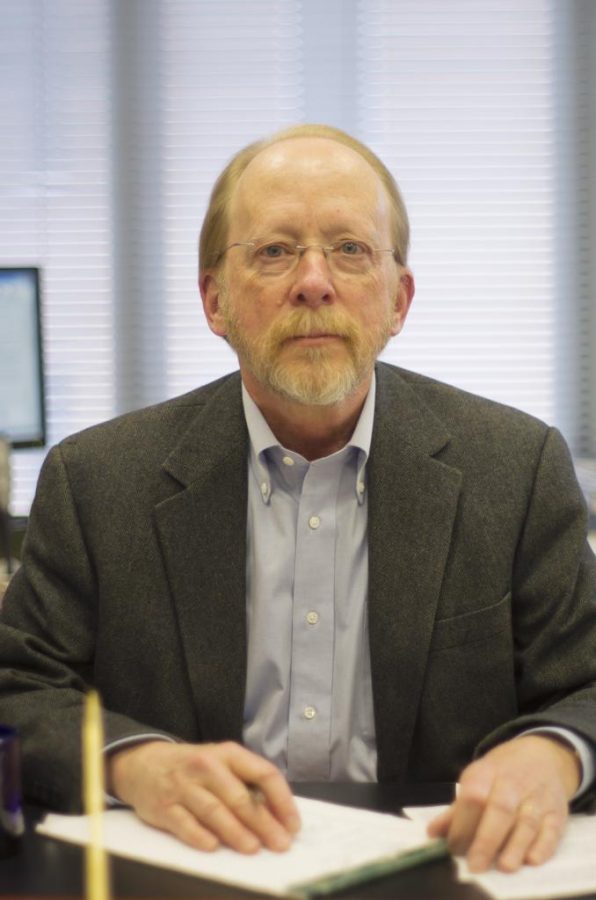Within the next year and a half, Pitt’s computer science department and school of information science will become one.
The new undergraduate school, the School of Computing Informatics, is slated to accept its first students in the fall of 2017 and will combine the 32 SIS faculty with the 18 CS faculty and distribute the 50-person staff in three new departments: computer science, informatics and network systems and information culture and data stewardship.
The school will also develop new classes within these departments, but exact courses have not yet been solidified, Ron Larsen, the current dean of SIS, said.
Pitt will launch a search this summer to choose a dean for the new school, and Larsen is stepping down from his position in the summer of 2017. Larsen said he’s using his remaining time to help out with the new school’s structuring and planning.
To steer the launch of the new school, Larsen and Taieb Znati, the chair of the CS department, organized four committees — education and curriculum, research and collaboration, organizational structure and vision and identity — to plan how Pitt should structure the new school.
Each committee has at least two co-chairs, one from computer science and one from information science. Committee meetings occur on an irregular basis but are open to CS and SIS faculty, as well as other Pitt faculty interested in the restructure. Attendance at these meetings has varied from five to 20 people, according to Larsen.
The committees work to develop the new school’s curriculum, sort out practical problems — such as location and budgeting — and create a plan aligned with Pitt’s strategic plan. The committees are submitting a formal proposal to the University this fall.
Along with planning curriculums and sorting out logistics, the committees must physically restructure the schools.
The CS department is currently housed in Sennott Square, while the School of Information Sciences is located in its own building on North Bellefield Avenue — the steering committee has not yet decided on the school’s new location.
“I think we came to the conclusion that colocation is essential. The face-to-face meeting and the spontaneous ability to create just by knocking on the door of your neighbor is great,” Znati said.
Although both departments have been thinking about their roles in a changing context for many years, Chancellor Patrick Gallagher and Provost Patricia Beeson prompted the exploration of a new program in April 2015.
A “shift from a singular focus on high performance computing to embracing big data, data analytics, [and] the interaction between computation and information, is driving the department merger,” Larsen said.
A growing number of other universities around the country, such as University of California, Irvine, University of Michigan, Indiana University and Drexel University, have reorganized their programs in similar ways.
For Pitt, the change comes as the University looks to shift its focus to big data projects. In March 2015, Pitt teamed up with Carnegie Mellon University and UPMC to form the Pittsburgh Health Data Alliance, a partnership to find new ways to use large sets of patient data in health care.
In October 2015, Pitt collaborated with UPMC, CMU and other city and county officials to open the Western Pennsylvania Regional Data Center, which has published city and county data, such as logs of the city’s 311 calls and information about opioid deaths, online.
“We can build on the existing strength we have right now to really make impacts on things that are high on the agenda. They are aligned with the objectives and the strategic priorities of this institution,” Znati said.
Before any changes take hold, the provost and chancellor must approve the proposal, which the committees are drafting now. They hope that this process will be complete in time to welcome the first cohort of students in the fall of 2017.
“Ultimately, the greatest benefit may be that this will be an opportunity to restructure the computer science curriculum to be more appropriate for the 21st century, rather than the 20th,” Daniel Brusilovsky, a senior computer science major, said.
Znati also said the change will give students skills, such as problem solving, to be more competitive in future job markets. The school intends to reorganize the curriculum in a way that students will develop computational thinking skills and be able to use their skills in informatics and programming to solve problems that will impact the University.
They have used the slogan, “contextually situated computing” to describe this problem-solving approach that will support the University’s goals.
“One of the fundamental questions is that if we bring these groups together, and aggregate their resources in a way that they can collaborate on a daily basis, what are the things that we can accomplish that we couldn’t before?” Larsen said.
Pitt’s 2015 strategic plan outlined a move toward personalized health care and education, and the reorganization will allow CS and SIS to use their knowledge of personalized computing and informatics to aid with these developments.
“I think it’s really an opportunity to build on the synergies that exist across these different areas — computing and information,” Vice Provost Laurie Kirsch, who is working with others in the Office of the Provost to facilitate the process of development, said.
Seizing what Pitt sees as an opportunity, the new school will be able to capitalize on the things that both the CS department and the SIS are good at separately and do things better together.
“I think the way we’re doing it, we have the ability to do big things with this school because of the ability to work with health and education, and we have very strong expertise,” Znati said.



